GSAS/EXPGUI Alumina tutorial (part 5)
Initial Fitting: Refine Scale Factor and Background
At this point we are almost
ready to start fitting parameters, but before we do that
the POWPREF program must be run. In GSAS, each data point has a list
of reflections that contribute to that data point. This assignment must
be made in POWPREF before the least squares fit can be performed in the
GSAS program GENLES. The program must also be rerun if a new phase or
histogram is added to the refinement. POWPREF should also be rerun if the
lattice constants or profile terms change significantly.
We want to refine the background and the scale factor to get started.
The scaling parameters are
shown on the Scaling panel, shown below.
GSAS offers us an overall scale factor for each histogram, plus a
phase fraction scale factor for each phase.
These two factors have exactly
the same effect for a single-phase refinement, so only one can be used.
By default, the scale factor refinement flag is turned on and the phase
fraction is off. This is what we will use.
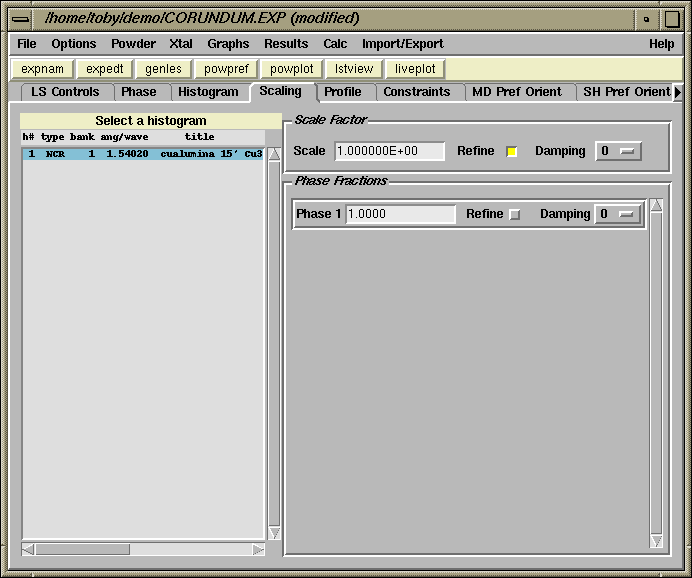
The other change that we will make in the default refinement options
is to lower the number of refinement cycles to 2. Also, make sure the "Extract
Fobs" check box on the least-squares pane is selected.
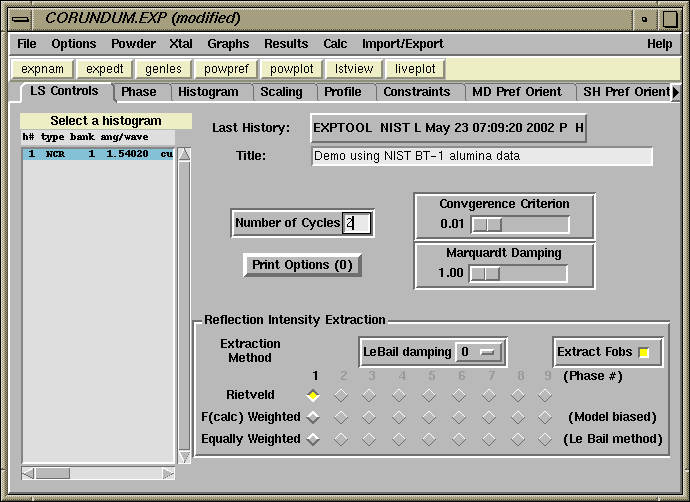
We are now ready to start running programs. First run POWPREF by pressing
the POWPREF button on the beige tool bar (or selecting the POWPREF option
in the Powder menu list.) That causes a window, such as the one below to open
as POWPREF runs.

When POWPREF has completed, press the ENTER key to continue and the
window should close.
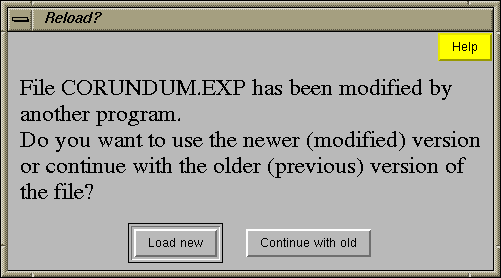
The POWPREF program makes changes to the experiment (.EXP) file and
this is noted by EXPGUI by the display of the warning message to the right.
At this point you do want to accept the changes made by POWPREF, so
click "Load New" and EXPGUI will reread the revised file.
By default, this window is shown every time the experiment file is
modified by any GSAS program. This allows the file to be "rolled back" to
the previous version, in case of a disastrous refinement run, by pressing
"Continue with old." However, some EXPGUI users find it annoying to be asked
this question all the time. In the EXPGUI Options menu, there is a menu item
called "Autoload EXP". If the "Autoload EXP" option is checked, the
experiment file will always be read automatically, but then it is no longer
possible to roll back erroneous steps so easily.
Note that the displayed history record has been updated to reflect the running
of POWPREF.
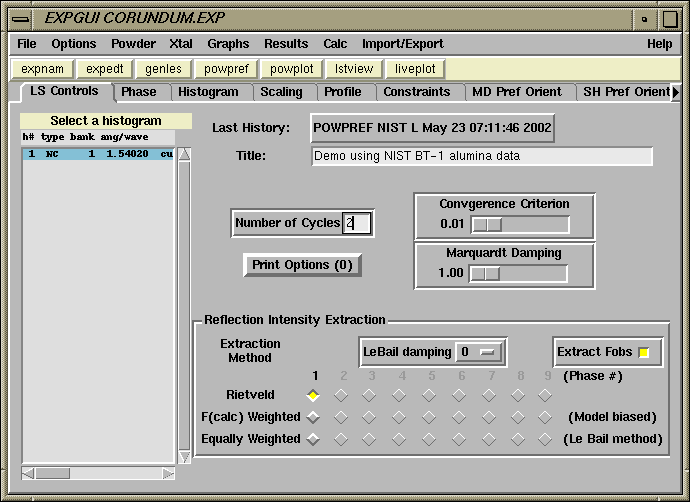
We can now initiate the refinement, by launching the GENLES program to
optimize the scale factor and background parameters. The output from this
run is shown below.
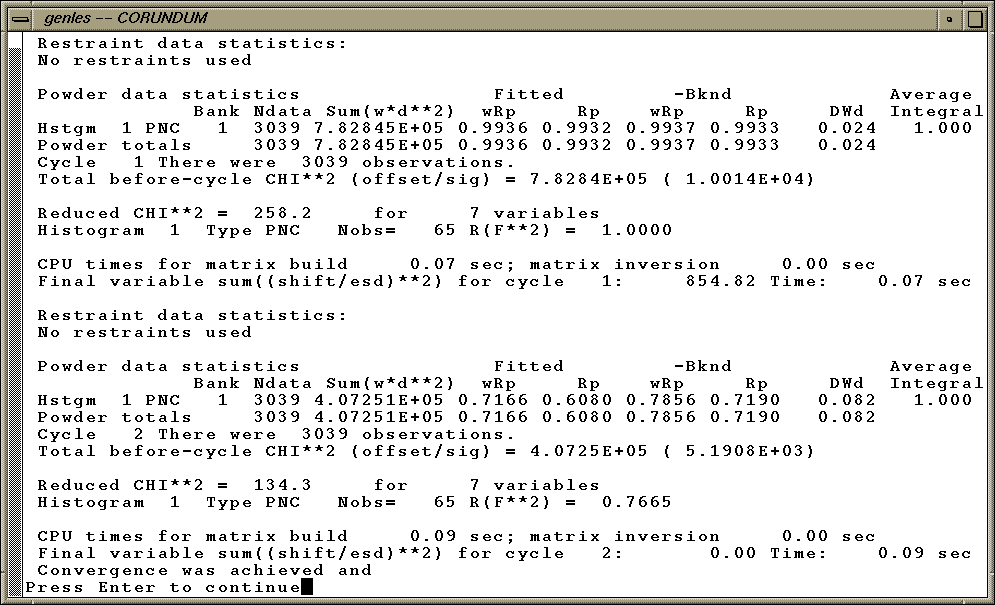
After the refinement completes, press Enter to continue and then press "Load
new" on the "Reload?" window.
The output from the GENLES run shows several points worth noting.
First note that the number of variables (varied parameters) is 7,
from the scale factor plus the 6 background terms. Note that the
initial weighted R-factor (wRp or Rwp) and Chi-squared values are
99% and 258, respectively but drop to 72% and 134, respectively after a cycle
of refinement. In the first cycle of refinement, there are very large shifts
in the parameters, but the parameters converge in the second cycle.
This is noted by the sum[(shift/esd)**2] term which is 855 in the first cycle,
but 0 in the second cycle. Note that shifts become insignificant when they are
small with respect to the esd (standard uncertainty), so a value of 855
means that at least some of the parameters made very large shifts in the
first cycle. Note that GSAS does not compute the R-factor or Chi-squared terms
after the second refinement cycle.
Previous:
Change Background Function
Next step:
Plotting the Initial Fit
